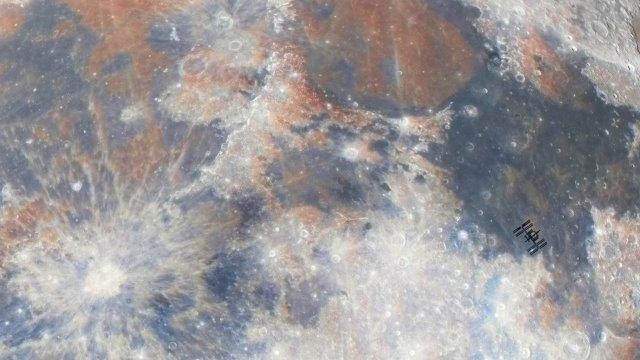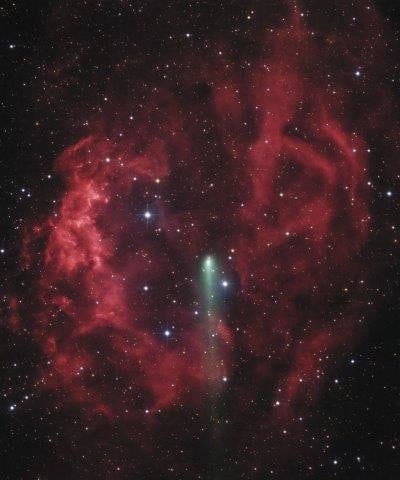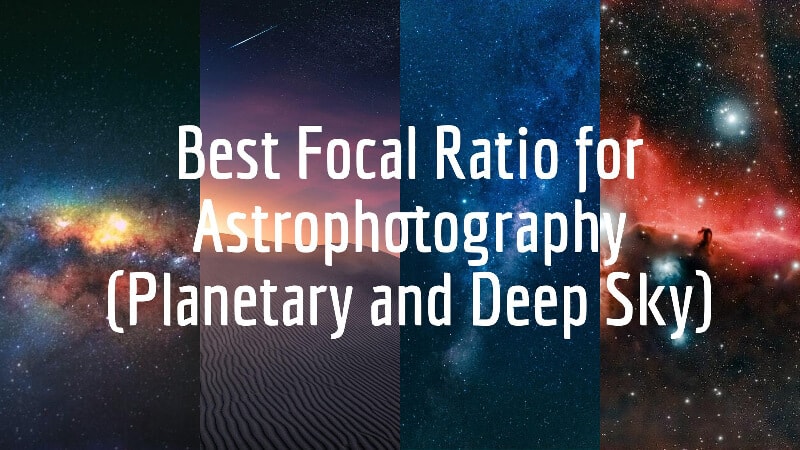Focal ratio measures how “fast” a telescope is and is one of the key indicators of how a telescope will perform.
But what is the best focal ratio for astrophotography?
The short answer is that you want a fast focal ratio for deep sky imaging, but a slower focal ratio can be adequate for planetary imaging.
Of course, there are other things to consider like the aperture and focal length.
Read on to understand more about this and to find out the focal ratio of the telescopes most successfully used for astrophotography.
Best Focal Ratio for Astrophotography
We looked at nearly 700 images shortlisted for the Astronomy Photographer of the Year competition in the last five years to examine what telescopes were used.
You can see the full analysis regarding telescopes in Best Telescopes for Astrophotography.
For this article, we have extracted what focal ratios were used in images using telescopes and split this up for planetary and deep sky imaging, since different focal ratios work better for these two types of astrophotography.
First up, what is the best focal ratio for planetary astrophotography?
Best Focal Ratio for Planetary Imaging
You can see here the most successfully used telescopes for planetary imaging and their focal ratios:
| Telescope | Type | FR |
|---|---|---|
| Celestron C11 | SCT | 10 |
| Celestron C14 | SCT | 11 |
| ASA 12” | Newtonian | 3.6 |
| Celestron C8 | SCT | 10 |
| ASA EQ1000 | RC | 6.7 |
| Celestron C14HD | SCT | 11 |
As you can see, the most successfully used telescopes were frequently from Celestron’s range of Scmidt-Cassegrain (SCT).
These are characterized by high aperture and long focal lengths, meaning relatively slow focal ratios.
This long focal length is a key element of what is needed when imaging planets with a telescope.
This is because it gives high magnification and a narrow field of view, which is perfect for getting in close to what are relatively small astronomical objects (in comparison to deep sky objects).
The focal ratio can then be quite high (i.e. slow) as the planets are relatively bright.
For more on this, see Best Telescopes for Planetary Imaging.

Best Focal Ratio for Deep Sky Imaging
Here you can see the most successfully used telescopes for deep sky imaging:
| Telescope | Type | FR |
|---|---|---|
| Takahashi FSQ-106 | APO | 5 |
| Planewave CDK 17 | CDK | 6.8 |
| Sky-Watcher 200/800 | Newtonian | 4 |
| Planewave CDK 24 | CDK | 6.5 |
| ASA 20″ Astrograph | Newtonian | 3.8 |
They tend to have faster focal ratios as this is what is needed for gathering light for relatively faint deep sky objects like nebulae and galaxies.

Astrophotography Focal Ratio FAQs
What is focal ratio in a telescope?
Focal ratio is a quantitative measure of a telescope’s “speed”. I.e. how quickly it gathers light.
It can be calculated by dividing the focal length by aperture, giving you an “f-number”.
To read more about this, see our Focal Ratio Formula and Calculator article.
What is a good focal ratio for a telescope?
Focal ratio needs to be considered alongside aperture and focal length and in the context of what you want to photograph.
Generally, a fast focal ratio is needed for imaging faint deep sky objects but is less important for imaging planets.
What focal ratio is good for planets?
The best telescopes for taking photos of planets are Celestron’s SCTs which have focal ratios of around F/10 and F/11.
What focal ratio is good for galaxies?
The best telescopes for photographing galaxies have fast focal ratios of around F/4 or F/5.
Does focal ratio matter for visual astronomy?
Focal ratio is less important than aperture for visual astronomy. You need high aperture to give you bright clear views when observing.
With astrophotography, the aperture can be lower as you will take long exposures to gather the light for the images.
Verdict: What is the Best Focal Ratio for Astrophotography?
Obviously, there is no single “best focal ratio”.
It is something that needs to be considered alongside aperture and focal length in the context of what it is that you want to photograph.
In general though:
- Fast focal ratios are needed for deep sky imaging because of their faintness
- Slower focal ratios work for planetary imaging due to their relative brightness
I hope that was useful to you. Please see the links below if you want to learn more about related areas.
Related articles:



